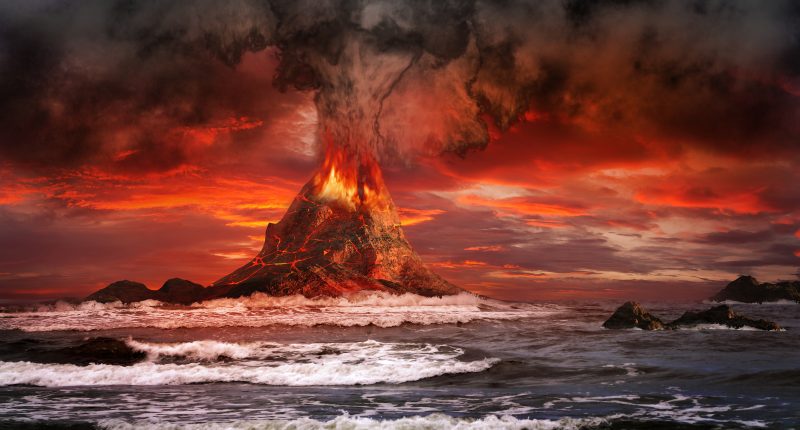SCIENTISTS have uncovered four huge deposits from supervolcano eruptions over the last 40,000 years.
Known as megabeds, these deposits are thought to have formed as a result of catastrophic events that occurred around every 10,000 to 15,000 years.
The megabeds were found in the Tyrrhenian Sea, located near where the African and Eurasian Plates meet off the coast of Italy.
Researchers shared their findings in a study published in the journal Geology.
Each megabed measures between 33 and 82 feet thick and is separated by distinct layers of sediments.
They were formed by a series of supervolcanic eruptions that occurred in the Campi Flegrei caldera, near Naples, Italy, researchers said.
Campi Flegrei caldera is one of the most dangerous volcanic regions in the world.
One of the biggest known eruptions on Earth happened there around 39,000 years ago.
And this eruption may have led to the oldest megabed formed in the area, researchers said.
It may have also led to the formation of the second bed.
Most read in Tech
The 18,000-year-old megabed may have formed from the Neapolitan Yellow Tuff supereruption of Campi Flegrei about 15,000 years ago.
And then the youngest megabed could have been created by another, less powerful eruption at Campi Flegrei.
The discovery of the megabeds suggests that the Campi Flegrei caldera may be capable of even larger eruptions in the future.
Moreover, these eruptions could have a devastating impact on Europe, causing widespread ashfall and tsunamis.
“That whole field is still active, there’s still a lot of concern about the future of that, so it’s certainly potentially possible that it could happen again,” lead study author Derek Sawyer, associate professor of Earth sciences at The Ohio State University, told Live Science.
However, the team’s findings could help to improve our understanding of the risks posed by supervolcanoes.
They hope that their work will lead to better early warning systems and mitigation strategies.











